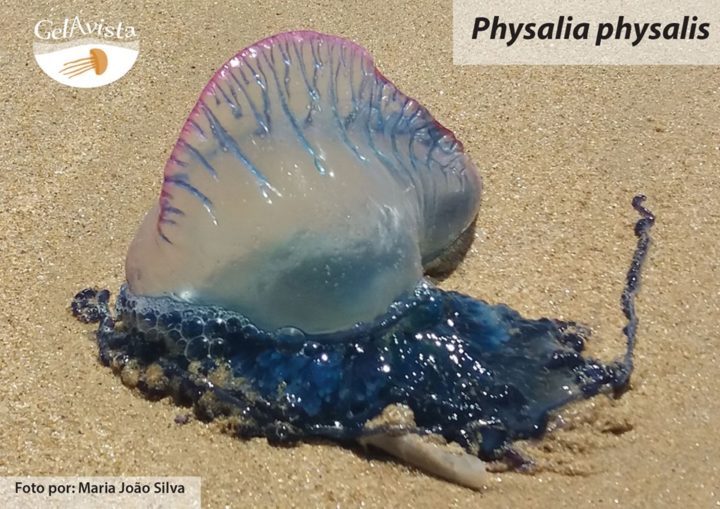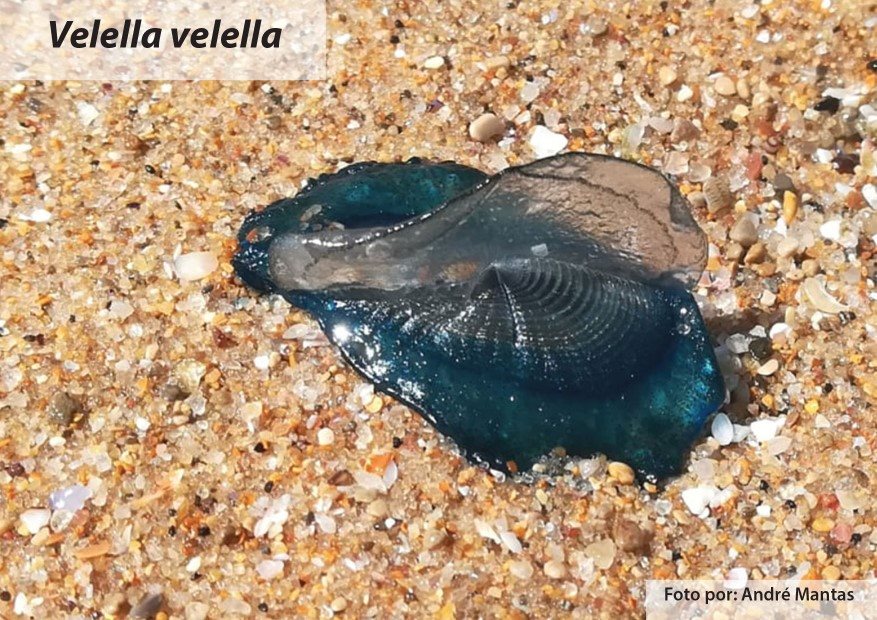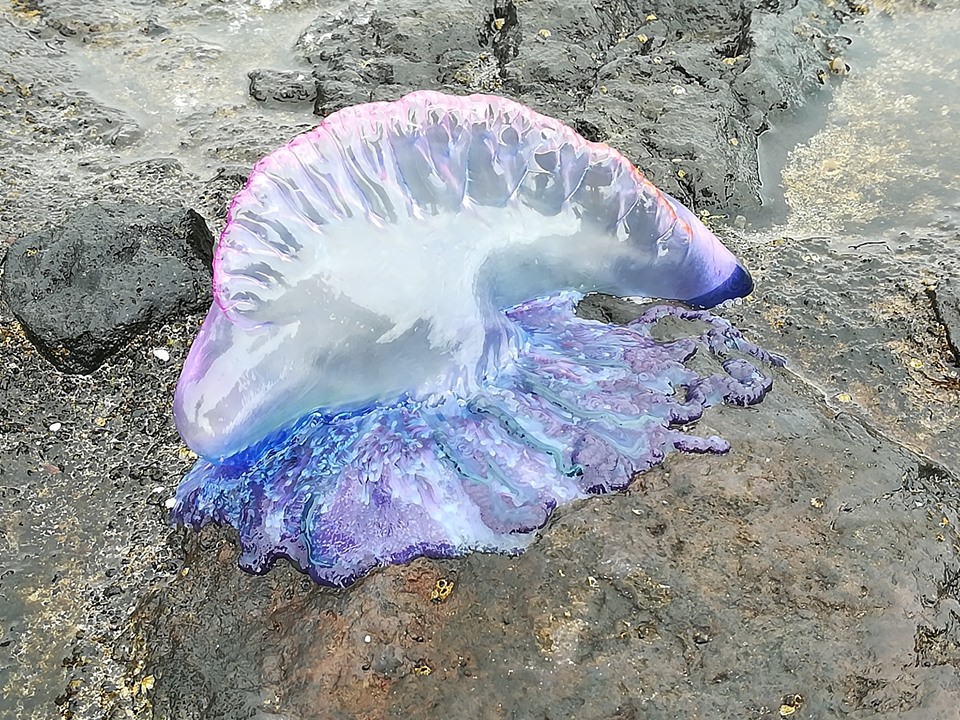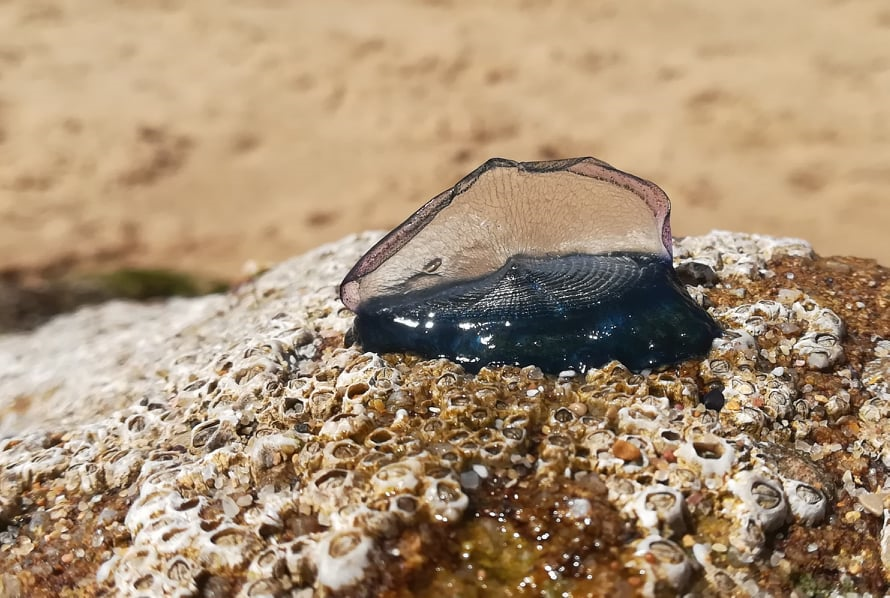The beaches of Amoreira (Aljezur) and Faro these are two of the places where, during this month of July, several species of gelatinous organisms (jellyfish or jellyfish) have been seen, namely from Velella Velella e Physalia physalis (the latter known as Caravela-Portuguesa), announced the GelAvista program.
It is a phenomenon of natural and seasonal rapid growth of species, which occurs every year, motivated by oceanographic and environmental conditions favorable to their reproduction.
"The year 2019 has been characterized by a longer and more intense period of daring of these species, detected since the end of January", add those responsible for that program.
However, data from GelAvista indicate that “the abundance of these organisms is already lower than at the end of May and beginning of June, but we will have to wait for the evolution of local oceanographic factors to understand how the transport of these species can progress. The abundance is expected to gradually decline over time”.
 For the month of July, sightings of the species Physalia physalis (Caravela-Portuguesa) received by GelAvista took place on the following beaches:
For the month of July, sightings of the species Physalia physalis (Caravela-Portuguesa) received by GelAvista took place on the following beaches:
• Lisbon: Areia Branca Beach (Lourinhã), Peralta Beach (Lourinhã), Porto Dinheiro Beach (Lourinhã), S. Lourenço Beach (Mafra), Giribeto Beach (Sintra), Carcavelos Beach
• Algarve: Amoreira Beach (Aljezur), Praia de Faro
• Leiria: Gamboa Beach (Peniche)
• Azores: Praia do Varadouro (Faial), Praia das Milícias (São Miguel), Silveira (Terceira), bathing area of Cinco Ribeiras (Terceira), Serretinha (Terceira); Calheta Wharf (Santa Cruz da Graciosa)
 Individuals of the species Velella Velella were sighted in:
Individuals of the species Velella Velella were sighted in:
• Coimbra: Tocha Beach (Cantanhede), Mira Beach (Cantanhede)
• Lisbon: Praia da Areia Branca (Lourinhã), Praia do Areal (Lourinhã), Praia da Peralta (Lourinhã), Praia de S. Lourenço (Mafra), Praia da Calada (Mafra), Praia da Foz do Lizandro (Ericeira), Praia do Sul (Ericeira), Praia do Algodio (Ericeira), Praia de Ribeira de Ilhas (Ericeira), Praia do Giribeto (Sintra), Praia da Cresmina (Sintra), Praia da Samarra (Sintra), Praia da Princesa (Caparica)
• Setubal: Praia Grande (Troia).
Although both species have a bluish color, the GelAvista program clarifies the differences.
Thus, the Physalia physalis (Portuguese Caravela) has a float in the form of a "balloon" and, in general, larger than the Velella.
Its tentacles can reach 30 meters in length and are very stinging, capable of causing severe burns. It is the species that requires greater caution on the part of bathers in Portuguese waters.
As regards Velella Velella, features a flat triangular “sail” shaped float. They are generally small, with a diameter that varies between 1 and 7 centimeters, and have short, slightly stinging tentacles, which, in most cases, pose no danger to bathers.
Recommendations:
It is recommended to avoid contact with the organisms, remembering the appropriate procedures in case of contact with Caravela-Portuguesa:
• Wash the affected area with sea water, without rubbing!
• Remove any remaining tentacles on the skin with forceps.
• Apply vinegar and hot bands (or water).
• Consult medical assistance.

Sightings of any kind of gelatinous organisms can be communicated to the GelAvista program through the email [email protected] or from GelAvista application for Android systems.
Your contribution is very important!



















Comments